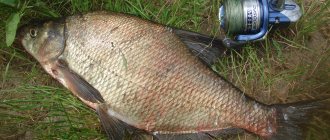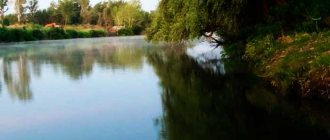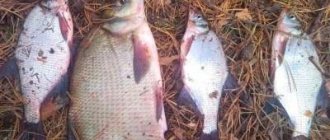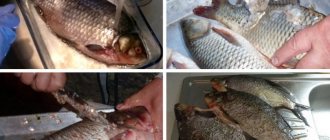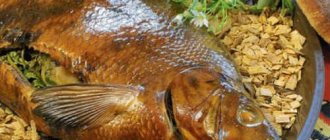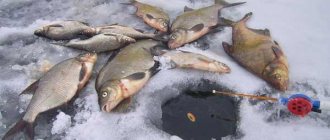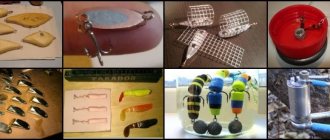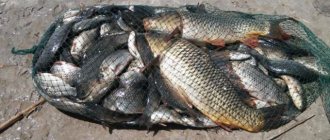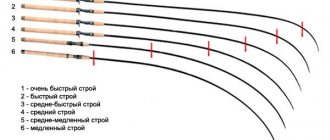Features of catching bream in August
Breams mainly live in a school. It is during this period of time that there is a significant activation of the processes of fat gain in this fish, so bream can peck at everything.
In August, bream increasingly prefer animal baits to plant foods. It is animal food that helps the rapid process of obesity of this fish. But still, the angler should take both plant and animal baits for fishing.
The fisherman needs to take into account such a feature of bream as the fact that they almost always feed at the very bottom of the reservoir. Bream do not particularly like areas of reservoirs with strong currents, preferring to find their food in quiet and calm water. Therefore, the angler should be aware of this when fishing for bream in August.
Let's start with choosing a location
The first thing an angler must understand is where the fish stand at a certain time of year, as well as during certain day and night hours. It is believed that peaceful fish bite at any time of the day, the main thing is to feed them correctly. It's not like that at all. If you feed in the wrong place, you may not even hope that the fish will come there. The maximum you can count on is bleak and chebak. Small white fish are usually more willing to come to the feeding table than large fish.
How to find a bream site in August? There are several important points to be aware of:
- Bream, and its small brother, the bream, are fish that live only in the lower layers of water, that is, at the very bottom. There she spends most, if not the main part, of her life.
- Places with a good current are not liked by bream. This fish prefers calm areas on the river, with a slow current. For example, bays, turns.
- As night falls, bream can approach the shore, where it is possible to catch it even with ordinary float tackle. Also in cloudy weather. The brighter it is outside, the deeper the holes in which the bream tries to hide.
- If the bottom is flat and sandy, then you should not look for bream in such a reservoir. It loves muddy areas and clay.
The search for food, so necessary for bream at the end of summer, leads bream to areas of reservoirs with dense underwater vegetation. Here the fish can usually find caddis flies, bloodworms and other insects, which constitute one of the important elements of the bream’s diet.
There are different ways to find where fish are supposed to stay. If the reservoir is unfamiliar, then before starting fishing, tap the bottom with a weight. You can take a regular spinning rod and rig it like you would for jig fishing, but without attaching bait. This method will not only clearly show all the holes on the bottom, but will also provide information about possible underwater obstacles (snags, debris) on which the hook may subsequently get caught.
Studying the bottom topography using a marker float
Using the same principle, you can study the topography of the fishing spot using a marker float. The most successful method is an echo sounder or an underwater camera. If you are a good swimmer, you can try to look at the intended fishing location with your own eyes. If, of course, the depth of the reservoir allows this.
Finding a fishing spot
Bream can live in rivers and reservoirs with stagnant water, in various reservoirs and lakes, ponds, or in small lakes left after the flood of large rivers.
As mentioned above, this fish prefers calm areas of reservoirs where there are no currents. It is on the surface of the bottom, in the thick silt deposits of the surface of the reservoir, that bream look for their food, slowly picking through the silt.
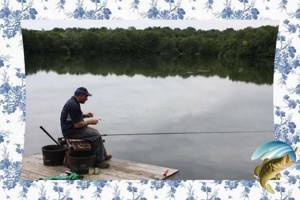
Moreover, the fisherman should take into account that under strong temperature conditions, bream, like most fish, tries to hide in deeper places in the reservoir in order to wait out the hot period in deep and cool water.
You should look for bream in August near clay shore areas. Also, this fish can be located in areas where there is a transition from deep to shallow water. You can catch bream on flat coastal areas where there is a large amount of aquatic grass.
During inclement weather and the onset of twilight, this fish actively moves to the coastline, where there is always food for it brought from land. You can search for bream from steep coastal areas.
August fishing for this fish will be more fruitful a little closer to the evening. In addition, night fishing also brings good results in terms of catches.
When to catch bream?
Bream bite almost all day long, but they prefer one bait or another, depending on the time. For example, during the day it is easy to catch it using plant or artificial bait, and in the evening or at night it will switch exclusively to animals.
After the winter lull, bream begins to bite in mid-late April, when the surface of the reservoir is completely free of the ice crust, the water warms up, and the sun begins to shine brighter.
Having recovered from hibernation, the bream will have an excellent appetite, because over the winter it has lost a little weight and is hungry. This biting period is observed until spawning.
During spawning, bream, like all other fish, loses its appetite and shows less activity, but after it ends, the bream has a voracious appetite for almost any bait.
Typically, bream spawning begins in mid-May, so the peak of the bite occurs in May - June, with a short interval at the end of May.
We must not forget that bream does not particularly like coastal zones, even if there is sufficient depth for it.
However, in the spring, before spawning, and in the summer after it, it moves in flocks closer to the shore in search of the required amount of food to gain weight.
In summer, bream is not particularly active, apparently it does not particularly like hot weather. And if in June bream is active to various kinds of bait, then in the middle and towards the end of summer it becomes sluggish, and therefore bites become less frequent.
However, even under such conditions, you can count on success by experimenting with complementary foods and bait.
However, at the end of August, the bream bite increases sharply and continues almost until November. With the arrival of cold weather, bream goes to the very bottom for the winter.
Features of fish behavior
The bream themselves are quite active at early dawn and evening sunset. This fish is especially active during periods before thunderstorms or during hours when there is light rain. In most cases, many anglers fish for bream in Augusta at night.
The bream themselves begin to prepare for the winter period in August, and therefore they have to eat more often and a lot in order to provide themselves with a good layer of fat, which will help ensure survival in the winter.
To better attract this fish to the fishing spot, the angler should use aromatic additives that can attract bream over long distances.
Large individuals of this family prefer to stay away from coastal areas, which is why they should be caught ten meters from the shore and further. Schools of bream can be noticed by the way air bubbles actively rise from the bottom to the surface, thus, the bream shovel the silt deposits of the bottom surface, looking for food.
Choosing bait for bream
When fishing for bream in August, such a component of fishing as feeding the fish always plays an important role. Often, fifty percent of the success of the fishing itself will depend on the choice of feeding agent.
A good option would be food made from vegetable cereals with the addition of finely chopped parts of maggots or worms. You should also add grasshoppers and bloodworms.
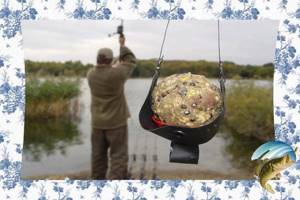
The feeding agent for bream should be made in such a way that it is possible to fashion unique balls, which are then thrown in to feed and attract bream.
You can use ready-made store-bought baits, of which there are now a great variety. When choosing, you should focus on the parameters of the fish that the angler wants to catch.
The feeding agent must not only lure bream to the fishing spot, but also keep them in this place for a long time.
The main components of feeding for bream are:
- - crackers;
- - cake mixtures;
- - various types of porridge;
- - bran;
- - flour of various types;
- - sunflower and pea seeds.
You can also use the addition of canned corn, honey, vegetable oils, and herbal aromatics.
Nozzles
Bream is a real picky fish; there are many baits for catching it, and August is no exception. Typically, fishermen use the following baits: bloodworms, worms, steamed grains of wheat, barley, peas; semolina or dough also works well. But very often bream bite on combined baits (sandwich). For example, bloodworms, maggots and semolina flavored with vanilla or cinnamon are planted. Ready-made children's puffed breakfasts, which are already coated with various aromatic additives (honey, caramel or chocolate), also performed well.
Well that's all, happy fishing everyone!
Techniques for catching bream on a feeder in August
When fishing for bream on a feeder in August, you should select fishing rods that will be equal in length to three and a half meters if you catch bream in lake reservoirs. A little more, about four and a half meters, you will need a feeder rod when fishing on rivers.
Initially, the bream is fed, then we wait about half an hour and throw in the feeder. If there is no bite for ten minutes, then we re-equip the feeder feeder and throw it again, and the feeder should be thrown into the fed place.
Initially, it will be better to feed several places for feeder fishing of bream. Thus, if there are no bites at one fishing site, you should move to another fishing site for this fish.
Gear selection
As mentioned above, in the dark a school of bream often enters the coastal zone in search of food, so you can reach it using a float rod. The best option would be a match tackle with a reel that allows you to cast the bait further. With the correct settings, fishing is possible at a distance of up to 40 meters.
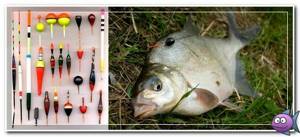
The equipment may be as follows:
- medium-hard rod 3.9 meters long with dough up to 25 g;
- high-speed spinning reel (meat grinder), balanced in weight with the rod;
- high-quality monofilament with a diameter of 0.16-0.20 mm (the length should be such as to fill the reel spool 4/5, this is important for long casting);
- Waggler-type sliding float with the ability to adjust the load;
- silicone stopper;
- several lead pellets (total weight depends on the strength of the current and the carrying capacity of the float);
- swivel;
- leash up to 40 cm long;
- hook.
The process of fishing with such gear is simple. First you need to cast the rig to the baited point and sink the line by lowering the tip of the rod into the water and making a couple of sharp turns of the reel. If everything is done correctly, the float will take a vertical position. From this moment on, all that remains is to carefully watch it and hook it as soon as it rises or completely falls on the water. This is how bream most often bites.
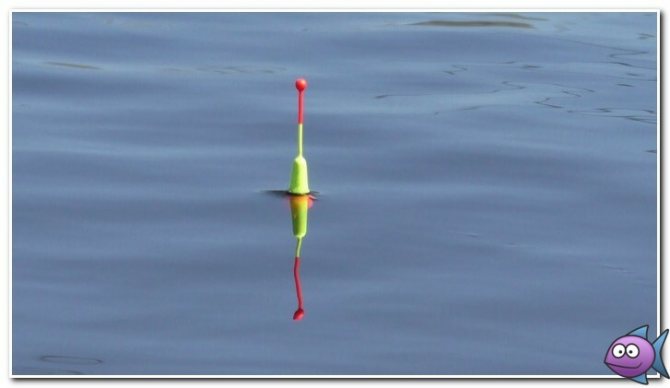
Feeder bream fishing is no less exciting. The feeder makes it possible to fish at decent distances and great depths, where large fish mainly swim. Bream weighing over a kilogram is a serious contender. He is strong, persistent, lively, and this leaves its mark on the choice of elements of tackle. Let's look at each one separately.
The rod is a long model of 3.9 meters, which not only allows you to throw the equipment far and accurately, but also makes it easier to control the hooked fish. Test - up to 120 g, this is quite enough for fishing on lakes and most rivers.
The reel is a powerful spinning reel with a 4000 spool. It is not practical to use small reels due to the small size of the main pair of gears. In feeder fishing, this mechanism experiences heavy loads. The smaller the gears, the faster it wears out.
Fishing line or cord - the choice depends on your own preferences. Both the first and second options have many supporters who defend their position with “killer” arguments. However, the truth, as is often the case, is somewhere in the middle. When fishing at short distances and shallow water, experienced feeder masters recommend using a monofilament line, and for depth and long casts over 25 meters, a braided cord is more suitable.
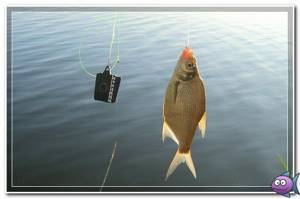
The leash is the most important element of equipment, the length of which affects the final result of fishing. A length of 50 cm is considered the starting point. Whether to shorten such a leash or, on the contrary, to make it longer, depends on the mood of the fished object. If the fish bites sluggishly, only sucks the bait, but does not swallow it, the leash should be lengthened. When the bite is active, it is usually shortened so that the hooking is of better quality.
As for installation, anglers have a fairly wide choice. Paternoster, helicopter, symmetrical and asymmetrical loops, equipment with an anti-twist tube, in-line... some installations are more suitable for standing water, others for flow. The weight of the feeder must correspond to the rod test and fishing conditions.
At the initial stage of fishing, you should thoroughly feed the selected point. Since bream loves to eat, it is advisable to throw at least 10 feeders of the mixture. After this you can start fishing. If the place is chosen correctly, the fish will not keep you waiting long.
Technique for catching bream using a float rod
When fishing with float rods, it is better to take fly rods. This option allows for longer casts. When catching bream on a float in August, in the case when there is no bite for a long time, you can experiment a little with the types of baits attached, or diversify the game with these baits.
You can make various combinations of plant and animal baits, original sandwiches from them. If fishing is carried out on the current, then you can try the wiring when the bait is actively moving in the water.
Choosing the time to catch bream
In August, usually early morning and late evening are the best fishing periods, however, this is not always the case. It happens that at 25 degrees during lunch hours active bites of large bream just begin. The time for such a bite starts from 10 to 16 o'clock in the afternoon. When the day comes to an end, it is the turn of active evening bream fishing, which can last until dawn. The best time for such fishing is the period from sunset to 1 am, then a slight decline and resumption closer to dawn.
Techniques for catching bream on a donk in August
August fishing can be carried out using bottom equipment. This method of fishing has several advantages - a fairly precise process is carried out to deliver leashes and baits to the fishing spot, there is not much noise during this process, so the fish are not scared away, in addition, several types of bait can be attached to this equipment, with this option some then one of them will definitely work.
Initially, the rubber bottom is strengthened on the shoreline thanks to a peg; the bite itself will be determined by the tension of the fishing line, although bells can be used. This equipment is a fairly catchy option for catching bream in August, which is why some anglers use only this equipment, rejecting all others.
Tips for beginners
- When fishing for bream, you need to try to move them away from areas with vegetation so that there is no entanglement, and therefore no escape of the fish itself.
- Fishing in August is very effective when using all kinds of aromatic additives, but you should not get too carried away with these substances, so as not to scare away the fish.
- It has been noticed that the bite and catch of bream increases significantly after the rain.
- After hooking a bream, you should not make excessively strong jerking movements, so as not to contribute to the rupture of the bream’s lips.
- Instead of maggots, you can try fishing with its larvae.
Groundbait in August
Probably everyone knows that peaceful fish react well to grains, seeds, and confectionery waste. It is taking these features into account that bait mixtures are made both at home and in factories. If you don’t have time, the easiest way is to go to the store and buy an already mixed version, but homemade porridge will definitely work better.
Choosing bait in the store
In August, choosing food for bream is not easy; it all depends on weather conditions and the characteristics of each reservoir. The main preferences of the cyprinid representative at this time are:
- the presence of sunflower seed cake in the bait;
- the presence of wheat bran and other cereals;
- must be corn or its derivatives.
But the main thing is not to overdo it with flavorings. During this period, bream will also respond well to the natural odors of sunflowers; if there is no bite, you can add molasses with the aroma of plums, strawberries, fruits, and cinnamon to the food. The natural aroma of this additive is also attractive to bream.
Tips for baiting bream
Spring baits
Depending on weather conditions in the spring, bream can actively react to different baits: March: bloodworm, worm, semolina, dough. April worm, maggot, bloodworm. May peas, corn, dough, pasta, semolina, bread, boiled wheat, pearl barley. The higher the air and water temperatures, the faster the bream switches from animal baits to plant baits.
Summer baits
In the summer heat, many complain about a complete lack of bite, but this is not always true. Properly selected bait can attract the attention of bream even in the heat. June: worm, maggot, corn, peas, pasta. July: steamed barley, maggot worms in the form of sandwiches. August: bread, pasta, corn, maggot worm. Temporary decreases in temperature indicators will entail a return of bream to animal types of bait ; vegetable bait should be offered in hot weather.
Autumn lures
In the autumn, bream continue to be actively caught on the feeder; groundbait and bait, as before, should work in tandem in such gear. As the temperature drops, bream will again want “meat” baits. September: earthworm and dung worm, maggot, hominy, bread, steamed cereals. October: bloodworms, worms, less often maggots. November: maggots and bloodworms, plant-based baits will not work. It is important to understand that the bait used in crushed form must be added to the bait .
Winter lures
In winter, bait for bream is very important; it is more difficult for passive fish to attract attention. Therefore, the selection of bait should be approached very carefully. December : sandwiches made from pieces of worms, bloodworms and maggots, less often boiled peas are used. January : bloodworm, worm. February : worm, bloodworm, semolina, peas. You can experiment and try using the dough as bait; at the end of February, bream can respond well to this species.
DIY cooking
Many fishermen with experience prepare their own bait; the porridge is cooked according to special recipes and with certain ingredients. The most catchy are considered:
- steamed pearl barley;
- boiled peas;
- Salapin porridge;
- millet.
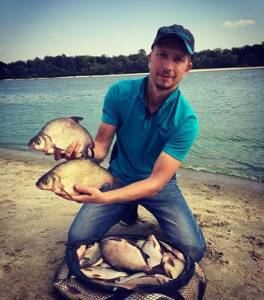
Additionally, fragrant vegetable oil or other flavorings are added to each option.
